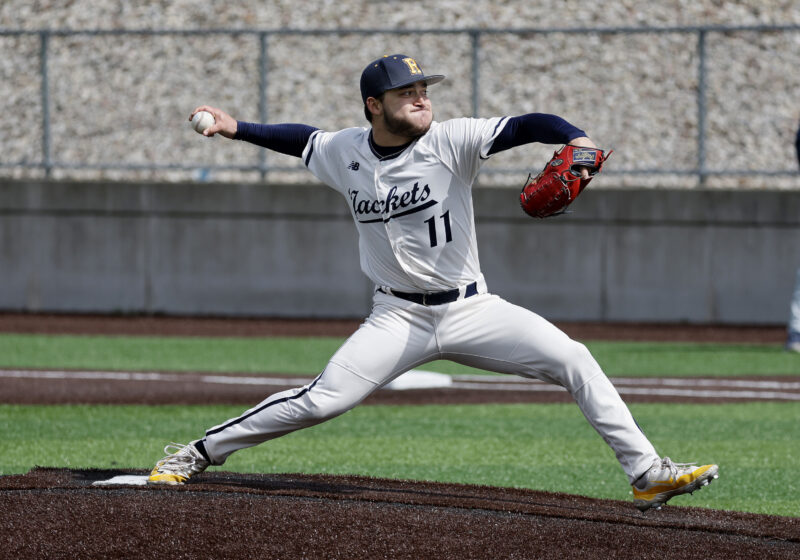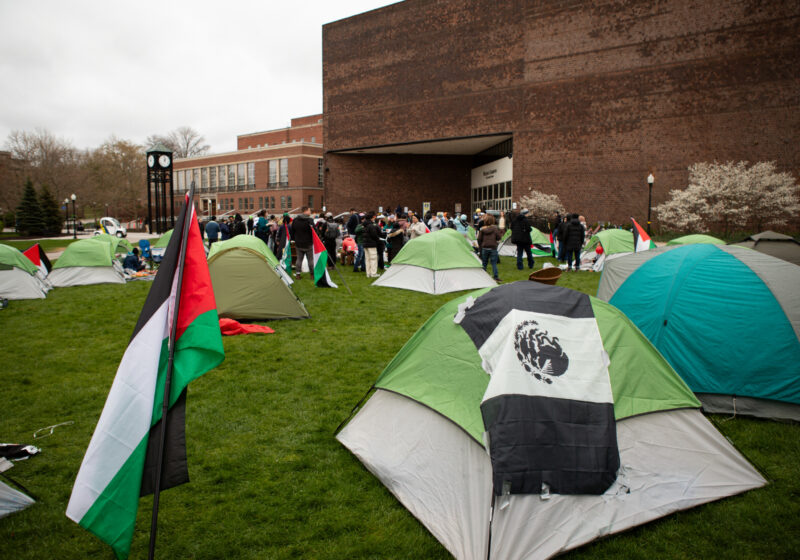Ten years ago this month, UR announced it would close a portion of Wilson Boulevard as part of the creation of Bausch and Lomb Riverside Park. Now, a plan is in the works to reopen the road as part of major improvements to the park area. The Rochester City Council on Tuesday approved the plan, which is scheduled for completion this summer.
The project would eliminate 100 parking spaces and beautify the riverfront part of campus, in addition to re-connecting the two pieces of Wilson Boulevard.
“We’re hoping to coordinate the work to get it done this summer,” Associate Vice President for university facilities and services Richard Pifer said.
“That’s a pretty aggressive schedule, though, and any number of things could set us back,” he continued. “I do want to make sure that the noisy, dusty effort is done so we’re not interefering with student life in and around the dorms and athletic facilities.”
Even though all of Wilson Boulevard will once again be connected, it won’t be a major city road, Associate Vice President for Public Relations Robert Kraus said. “This is a park road. It isn’t like the decades old thoroughfare that Wilson Boulevard once was. Everything must be done to make cars drive as safe as possible.”
All parking on the redesigned Wilson Boulevard will be parallel parking. There will be 80 parking spaces ? all metered parallel parking spaces ? on that road. That is a decrease from the 180 there are now. All 50 overflow-parking spots for students will be eliminated, and there will be an additional net decrease of 50 metered spaces.
“This campus does have a parking shortage, and these changes will affect students in a bad way,” junior and Students’ Association President-elect Lonny Mallach said. “I wish they could have done it differently.”
Most of the 180 currently existing spaces are perpendicular spaces. The new parallel spaces will take up more space than perpendicular ones do, but the change is being made primarily for safety reasons, Pifer said. “On almost a daily basis we have near misses involving the perpendicular spaces,” he said.
Visitors to the park often don’t want to park right in the middle of it, Pifer said, because they are jogging, biking or skating into and through it.
Pifer said that there would be other parking options for students to make up for the loss of overflow parking. “There won’t be less parking,” he said. “Parking spaces available to students will just be in other locations.”
Parking is a big problem on campus, Pifer said, and student input is needed to solve it. “We have to address parking,” he said. “In the fall, we want to establish a dialogue with students.”
“It’s good that they’re asking for student input, but they should have done that before they started building,” Mallach said.
Mallach said he didn’t have a solution to the parking crunch. “People smarter than me haven’t been able to solve this problem,” he said.
UR plans to spend $1 million to improve the park. The money comes from gifts that were given to the university with the stipulation that they be spent on the park.
The park and the road are owned by the city but maintained by the university.
Among the planned changes are the installation of picnic tables and benches, improved signage, including signage on historical and botanical features of the park, additional lighting, clearing of brush for better views of the river and a tree-lined median from Intercampus Drive to Library Road.
One focus of the project is the footbridge landing, behind Tiernan Hall. Pifer said that there were plans for picnic tables and an iris garden in that area.
Improvements to Kendrick Road will allow for a new bike trail connecting the Erie Canal to the path that runs through Riverside Park.
“The road and other amenities will help to enhance the park-like flavor,” Kraus said. “These changes should make the park more inviting for campus residents and for visitors.”
“We think it’s going to be a super addition for students, faculty and visitors to the campus,” Pifer said.
Wilson Boulevard was a main thoroughfare for traffic – through traffic as well as campus traffic – until the Rochester City Council voted unanimously in 1992 to close the section between Faculty Road and Alumni Road.
There had been free parking all along both sides of Wilson Boulevard between Elmwood Avenue and Ford Street before 1992. No official count is available, but the Campus Times estimates that the number of free parking spaces was over 1,000.
Those spaces were eliminated and replaced with the 130 metered spaces and 50 overflow spaces that currently exist on the road. In addition, Park Lot was expanded and Lot A on Kendrick Road was opened to students, so that the total number of parking spaces available to students actually increased.
Wilson Boulevard was generally regarded as an ugly part of campus. One objective of the 1992 redesign was to “eliminate that very unattractive strip of asphalt we call Wilson Boulevard,” said Paul Burgett, then vice president and university dean of students, in the October 15, 1992 issue of the CT.
As for the current plan, Pifer stressed that it isn’t final. “Nothing is nailed in concrete,” he said. “We have to put projects up for bid before we can determine if what we have is possible.”
“We want to have a place that students can brag to their friends about, and I think that’s possible,” Pifer said.
Bock can be reached at dbock@campustimes.org.

